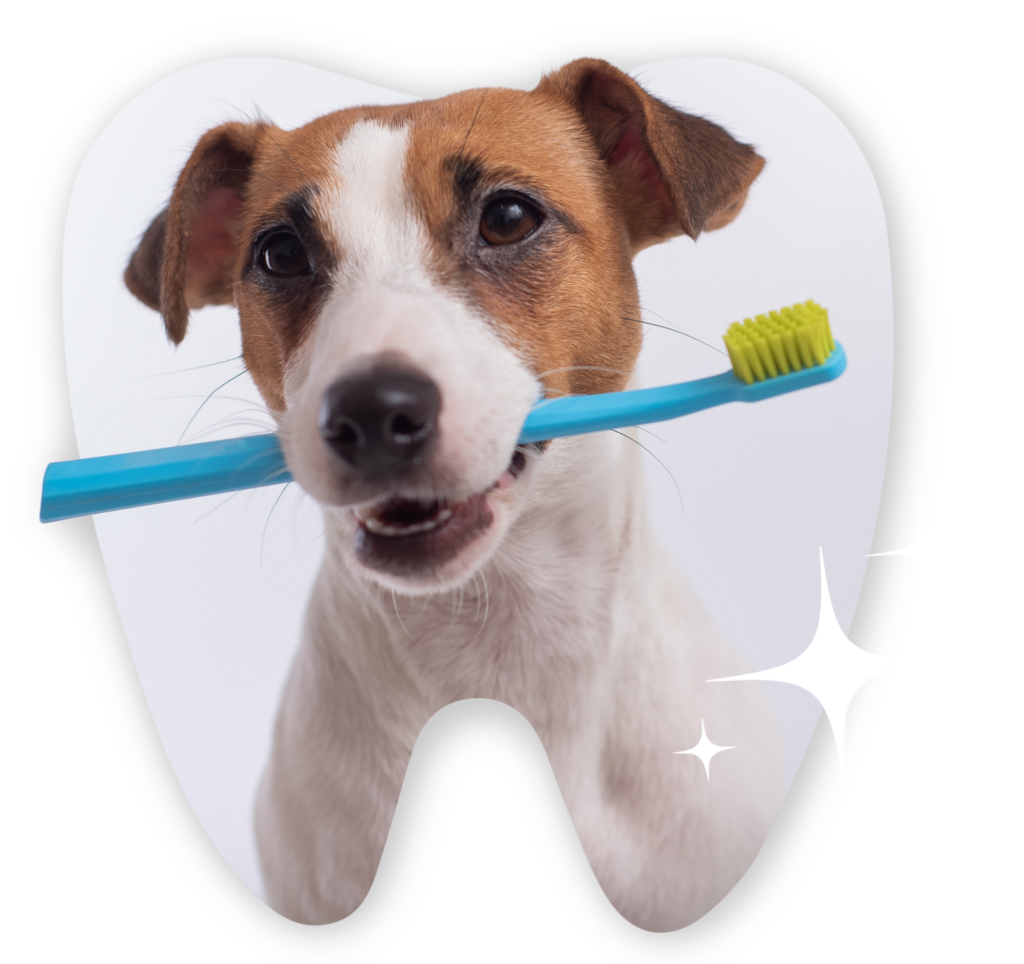Dental Days Deal
$100 off Dental Cleanings
For new and existing clients!
Call (928) 636-4382 to schedule a cleaning today!

An essential part of your pet’s overall health is providing pet teeth cleaning and comprehensive dental care to prevent dental disease. Dental disease is a common infection in pets that may cause more serious health problems including infection of the heart, liver or kidneys. Fortunately, Chino Valley Animal Hospital can help keep your pet healthy through professional pet dental care.
Call Chino Valley Animal Hospital to schedule your pet’s dental appointment with us today!
When Does My Pet Need Dental Care?
Unfortunately, our pets can’t tell us when they are feeling any discomfort. In fact, they instinctively hide symptoms of pain which can make it difficult to know when they require dental care. We recommend having your companion’s teeth checked and receiving a professional pet teeth cleaning at least once a year to properly maintain their oral health. When we perform an oral exam, we look for the following symptoms:
Bad breath
Lack of appetite or inability to chew
Discoloration or build up
Swelling and bleeding in or around the mouth
Broken, loose, or missing teeth
Excessive chewing or drooling
If you notice any of these symptoms or behaviors, we recommend bringing your pet to Chino Valley Animal Hospital.

Pet Dental Care FAQ
Pet dental care is the most commonly overlooked aspect of care, and we want to help educate pet owners in Chino Valley and Yavapai County on the importance of regular, routine dental care and how it helps keep your pet happy and healthy.
Our team offers a variety of pet dental services and will work with you to determine the best treatment plan according to your pet’s specific needs. Here is what to expect at a dental appointment with us:
- Your pet is placed under general anesthesia so we can perform a more thorough exam and proceed with cleaning your pet’s teeth.
- We will perform full mouth dental X-rays to inspect for any underlying infections.
- We scale and polish your pet’s teeth and apply Oravet plaque prevention to ward off any future plaque or tartar accumulation.
- We can also provide tooth extractions and other oral surgeries if necessary.
Dental disease can seriously harm your pet’s health, including causing infection, trouble eating, and behavioral problems. Bacteria may get under the gums and slip into your pet’s bloodstream to provoke further health problems such as heart, liver or kidney disease. Annual dental appointments can help maintain your pet’s health and prevent pain or disease from affecting your pet’s daily life.
Dental radiology or dental X-rays are used to provide a more complete picture of your companion’s dental health. Because our pets can’t tell us when they are in pain, our team recommends dental X-rays to every pet to ensure we are appropriately treating your their teeth. X-rays may reveal hidden conditions including root abscesses, root fractures, severe bone loss of the jaw and cystic lesions and allow us to diagnose and treat any issues in a timely manner.
STEP 1: SUPRAGINGIVAL CLEANING
Visible plaque and tartar accumulation is cleared away from all surfaces of the teeth.
STEP :2 SUBGINGIVAL CLEANING
Then we will clean below the gum line, which is your pet’s best chance at preventing dental disease.
STEP 3: ASSESSMENT
Your veterinarian will perform a full mouth examination and check for any abnormalities such as tongue or lip lesions, deep pockets in the gums around the teeth and loose, broken or discolored teeth.
STEP 4: RADIOGRAPHS
Dental X-rays are taken to uncover any hidden problems including retained roots, enamel defects, root abscesses and bone loss due to infection.
STEP 5: POLISHING
Removing plaque and calculus causes a microscopic roughening of the teeth’s surface. This makes it easier for plaque and calculus to accumulate. To prevent this, we will polish the teeth to smooth the surface of each tooth.
STEP 6: SUB-GINGIVAL LAVAGE
Scaling and polishing may cause debris to become trapped below the gum line and cause inflammation and increase the risk of dental disease. We will gently flush the gums with an antibacterial solution to combat this.
STEP 7: FLUORIDE TREATMENT
We can also provide a fluoride treatment to help strengthen the enamel of your pet’s teeth, decrease tooth sensitivity, and reduce the progression of Feline Oral Resorption Lesions.
STEP 8: TREATMENT
Your veterinarian may recommend treatment options depending on the results of the assessment previously performed. We can discuss any abnormalities that were found and walk you through various treatment options.
STEP 9: PREVENTION
This is the most important part of the dental hygiene procedure, and includes scheduling regular dental appointments for your pet to ensure their teeth stay clean and healthy and prevent more serious health problems from occurring.


